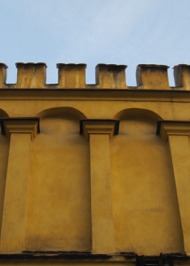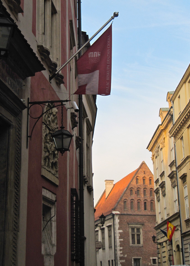Kanonicza street
Krakow, POLAND
CENTRAL europe


Kanonicza street
Krakow, POLAND
CENTRAL europe


Kanonicza Street, considered to be one of the oldest and most beautiful streets of Kraków, stands at the foot of Wawel Hill with the Royal Castle looming over it in the background. This street is the last section of a ceremonial route known as the Royal Road that begins at Florian’s Gate on the north side of the Old Town. Kanonicza Street was originally lined with the mansions of noblemen, then replaced with the palatial residences of Kraków canons and prelates. Many of these buildings still belong to the Catholic Church. The architecture of the street is predominantly Renaissance. One of these buildings, at 19-21 Kanonicza Street, houses the former rooms turned into a papal department of Kraköw’s Archdiocese Museum, exhibiting a selection of art from various churches.. These items include stone carvings, wooden winged altar pieces, sculptures of the Madonna and child, and paintings of a religious nature. The house was where Father Karol Wojtyla, the future Pope John Paul II lived from 1951 to 1963. After viewing the museum, Henry and I were pleased to find a wonderful restaurant located in one of these grand Renaissance buildings across from the museum, now housing the Hotel Copernicus. The small dining room with painted wainscoting, candlelight and beautiful linens was the perfect setting for a gourmet meal of pumpkin soup and roasted goose.
PHOTOS: Top Three: 1. View along Kanonicza Street. The red brick house on the right borders the charming square that opens onto Grodzka Street. 2. Renaissance detailing on a doorway on one of the palatial buildings on Kanonicza Street. 3. View of the curve of Kanonicza Street, below Wawel Hill. Middle Three: 1. A charming bird crowns an arched pediment, framed by two capitals topped with crowns. 2. A brass head of a lion, a door knocker on one of the palatial Renaissance-styled houses on Kanonicza Street. 3. Egg-yolk gold and castellations distinguish a building on the street. Bottom Three: 1. Cobblestones on the street lined with palatial buildings. 2. The charming doorway on Kanonicza Street, its keystone arch a male head resembling a lion. 3. View of the red brick building that is now Hotel Copernicus.

Renaissance Architecture








